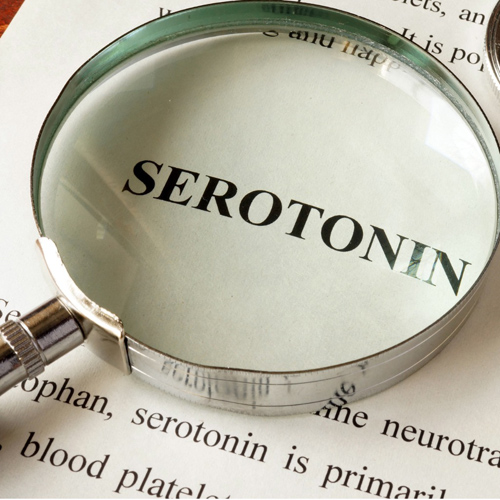SSRIs. SNRIs. TCAs. MAOIs.

There is much we still don’t understand about depression and how to treat it. For example, it had been believed that MDD was simply a chemical imbalance in the brain; however, scientists believe it’s more complicated than that.
“It is not possible to explain either the disease or its treatment based solely on levels of neurotransmitters,” Yale University neurobiologist Ronald Duman told Psychology Today.
In fact, Psychology Today states “the newest evidence indicates that recurrent depression is in fact a neurodegenerative disorder, disrupting the structure and function of brain cells, destroying nerve cell connections, even killing certain brain cells, and precipitating cognitive decline.”
Because so much is unknown about the disease and how to treat it, there are a variety of different depression treatments – including medication, psychotherapy (talk therapy), brain stimulation therapy, acupuncture, vagus nerve stimulation, and many others.
One of the most commonly used treatment options is antidepressant medications.
What are the Types of Depression Medications?
There are many different types of antidepressants:
- selective serotonin reuptake inhibitors (SSRIs)
- serotonin and norepinephrine reuptake inhibitors (SNRIs)
- tricyclic antidepressants (TCAs)
- monoamine oxidase inhibitors (MAOIs)
- ketamine
SSRIs and SNRIs
SSRIs
The most commonly used antidepressants are SSRIs. Serotonin is an important chemical associated with feelings of happiness and well-being, among other complex biological functions. SSRIs are designed to block the serotonin transporter, leading to an increase in serotonin in the synapse.

Examples of SSRIs include fluoxetine (Prozac®), sertraline (Zoloft®), paroxetine (Paxil®), citalopram (Celexa®), fluvoxamine (Luvox®), and escitalopram (Lexapro®).
SNRIs
SNRIs are the second most commonly used antidepressants. Like SSRIs, they block the serotonin transporter, leading to an increase in the levels of serotonin in the synapse. In addition to that, they also block the norepinephrine transporter, leading to an increase in levels of norepinephrine in the synapse. According to the Mayo Clinic, SNRIs are thought to alleviate depressive symptoms by “impacting chemical messengers (neurotransmitters) used to communicate between brain cells.”
Desvenlafaxine (Pristiq®, Khedezla®), duloxetine (Cymbalta®) and venlafaxine (Effexor®) are some common SNRIs.
Tricyclic antidepressants (TCAs)
Other kinds of antidepressants are typically prescribed if SSRIs and SNRIs fail to alleviate depressive symptoms. TCAswork in a slightly similar way to SNRIs. They work to “block the reabsorption of serotonin and epinephrine back into nerve cells after these chemicals are released into a synapse,” according to WebMD.

Monoamine oxidase inhibitors (MAOIs)
MAOIs, the first antidepressants, were developed in the early 1950s.
“An enzyme called monoamine oxidase is involved in removing the neurotransmitters norepinephrine, serotonin and dopamine from the brain,” according to the Mayo Clinic. “MAOIs prevent this from happening, which makes more of these brain chemicals available to effect changes in both cells and circuits that have been impacted by depression.”
Isocarboxazid (Marplan®) and phenelzine (Nardil®) are two examples of MAOIs.
Ketamine
A new depression treatment, ketamine, has been receiving a lot of attention due to a recent Food & Drug Administration (FDA) regulatory approval decision. In March 2019, the FDA approved the use of esketamine nasal spray (Spravato®), in conjunction with an oral antidepressant, to treat patients with treatment-resistant depression.
According to Psychiatrist Alexander Papp, MD, in a Q&A for UC San Diego Health, ketamine “works by quickly increasing the activity of the neurotransmitter glutamate in the frontal cortex of the brain, while also allowing new synapses to form in the same area. The speediness of ketamine in producing an antidepressant effect occurs because this drug bypasses the traditional serotonin route and goes directly to activating glutamate. This is very different from traditional antidepressants, which first increase the activity of serotonin in multiple different areas of the brain, and then ultimately affect glutamate.”
Finding an Antidepressant that Works for You
Depression medication doesn’t cure depression; it relieves the symptoms that depression can cause. Therefore, depression may require long-term treatment.
If you are having trouble finding a depression medication that alleviates your symptoms without causing frustrating side effects, you aren’t alone. Only about a third of patients who are diagnosed with major depressive disorder (MDD) find a medication that works for them on the first try.
Your healthcare provider takes into consideration your entire clinical profile for medication selection when prescribing medication, which can include:
- your symptoms
- potential side effects from the medication
- potential drug/drug interactions
- food/drug interactions
- other health conditions you have
- insurance coverage and/or cost

Once you and your doctor have chosen a medication regimen, it’s important to keep in touch. You should notify your healthcare provider of any side effects, or if the medication isn’t relieving your symptoms.
However, as the Mayo Clinic warns, “it may take six or more weeks for it to be fully effective. With some antidepressants, you can take the full dosage immediately. With others, you may need to gradually increase your dose.” The Mayo Clinic further cautions that you should take your medication as prescribed by your healthcare provider – consistently and at the correct dosage.
If you are interested in learning more about antidepressant treatments, please read our other blog posts “How to Minimize Antidepressant Side Effects” or “Is Your Antidepressant Working? 4 Ways to Tell.”
Our articles are for informational purposes only and are reviewed by our Medical Information team, which includes PharmDs, MDs, and PhDs. Do not make any changes to your current medications or dosing without consulting your healthcare provider.
The GeneSight test must be ordered by and used only in consultation with a healthcare provider who can prescribe medications. As with all genetic tests, the GeneSight test results have limitations and do not constitute medical advice. The test results are designed to be just one part of a larger, complete patient assessment, which would include proper diagnosis and consideration of your medical history, other medications you may be taking, your family history, and other factors.
If you are a healthcare provider and interested in learning more about the GeneSight test, please contact us at 855.891.9415. If you are a patient, please talk with your doctor to see if the GeneSight test may be helpful.




